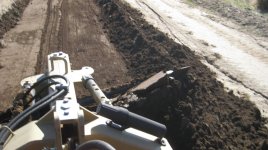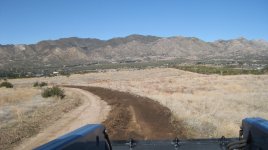Volume was more my concern than physical size. Too much to drag. Never too old to learn ! What are you calling draft control then?
The knob that you are talking about does not perform the draft control function, it only adjusts the rate at which the 3pt hitch falls or can be shut off so that the hitch will not lower at all.
This is taken from Tractorsmart. com
Draft control. Draft control, while not essential, makes life a little easier when plowing, sub-soiling, or using other ground engaging implements. For illustration purposes, let's assume we want to go plow up the back forty. We've mounted our plow to the three point hitch and adjusted things so that the plow will run straight and track properly behind the tractor. A note about plowing- if you have adjusted the plow properly, you should not have to use the stabilizer system to keep it running true behind the tractor. As you let the lift arms down, and begin to move forward though the field, the plow will start to enter the ground. As the plow continues down, traction and horsepower requirements increase. The natural tendency is for the plow to continue down until the tractor either loses traction, runs out of power, or the lift arms reach their lower limit. It is
very unlikely that the latter will happen. We want to be able to plow at a reasonable depth without straining the engine or having excessive tire slippage. We also do not want to have to continually fiddle with the lift controls, raising and lowering the plow by small amounts, as ground conditions vary throughout the field. That's where draft control really helps. Draft control senses the amount of strain that the tractor is being subjected to from the plow. If the strain exceeds a predetermined level, the draft control will automatically raise the plow just enough to restore normal loading of the tractor. After you get past the hard spot in the field, the draft control automatically returns the plow to the pre-selected, ideal depth. There are two main types of draft sensing in wide use today. They are:
lower link draft sensing, and
top link draft sensing. Both achieve the same end result, and much discussion could be made over which is the best method. Generally you will find lower link sensing on larger, higher horsepower tractors. In the case of lower link sensing, the front of the lift arms are attached to a common bar that flexes with variable loading to impart movement to linkage that is ultimately connected to the control valve. There are also tractors on the market that incorporate an electronic lift control system. With these, the lower draft bar contains a strain sensor which sends a signal to an onboard computer. Movement of these electronic bars is almost undetectable to the eye. For tractors that utilize top link draft sensing, there are several methods in use to transmit draft load information to the control valve. For a large portion of North American style tractors, there is a rather large (usually internal) coil spring, which is compressed (by the top link) as draft load increases, and relaxed as the load diminishes. This compression/relaxation causes movement in the draft control linkage, thus changing the position on the control valve, raising and lowering the lift arms as needed. Other tractors (namely European style) have a massive leaf type spring between the top link and the lift cover. Still others use a torsion bar that is actually twisted as the top link moves toward and away from the tractor. Now, with all of this draft action going on, we've got to slow the lift system down some, or we'll end up with a rapid, out of control oscillation of the lift arms going up and down. This is accomplished with something called?
Response control. Response control (in most systems we know of) simply serves to control the
rate at which hydraulic oil is allowed to escape from the lift cylinder. By slowing this rate, we minimize undesirable oscillations that would otherwise occur. Response control has no effect on rate of lift, and that is good, because we want the plow to raise quickly when we hit a hard spot. However, if we let the plow go back into the ground at an uncontrolled speed, we will end up pulling a plow that jumps into and out of the ground. We have to give the system a little time to settle down somewhere in the raise/lower cycle, and that is the function of the response control.
To get the maximum benefit from draft control, you
must use it the way the manufacturer intended for it to be used. Do you need draft control? On the smaller tractors, probably not, as these tractors are rarely used to do much plowing. On larger tractors, it is pretty much standard equipment anyway, so the choice is made for you.



